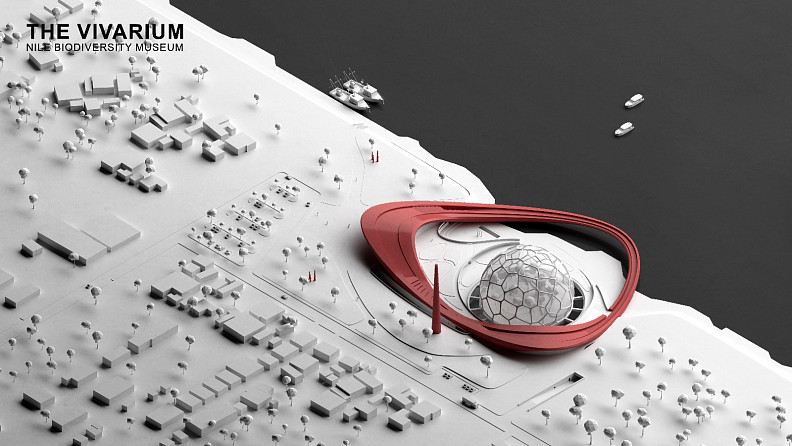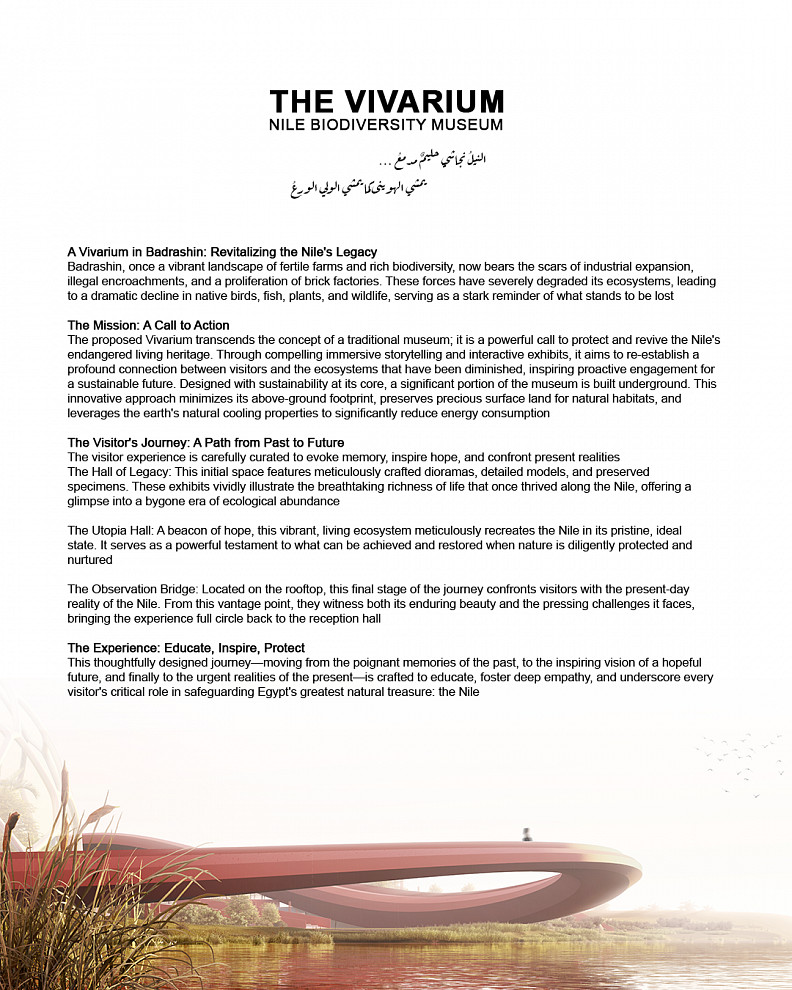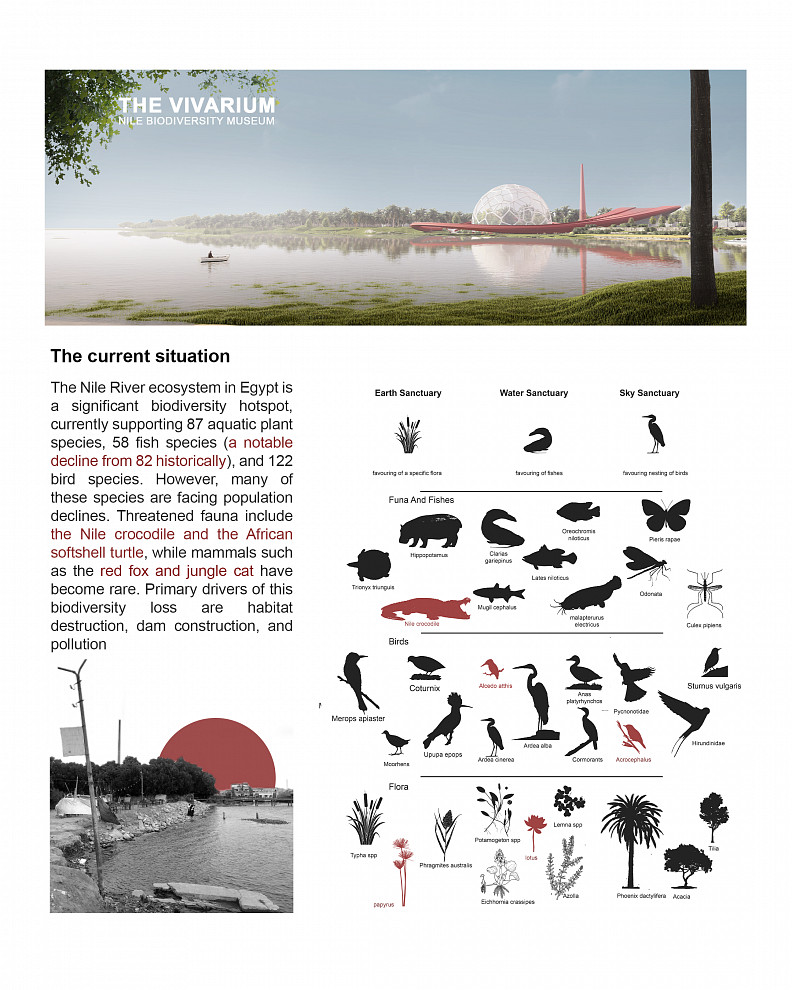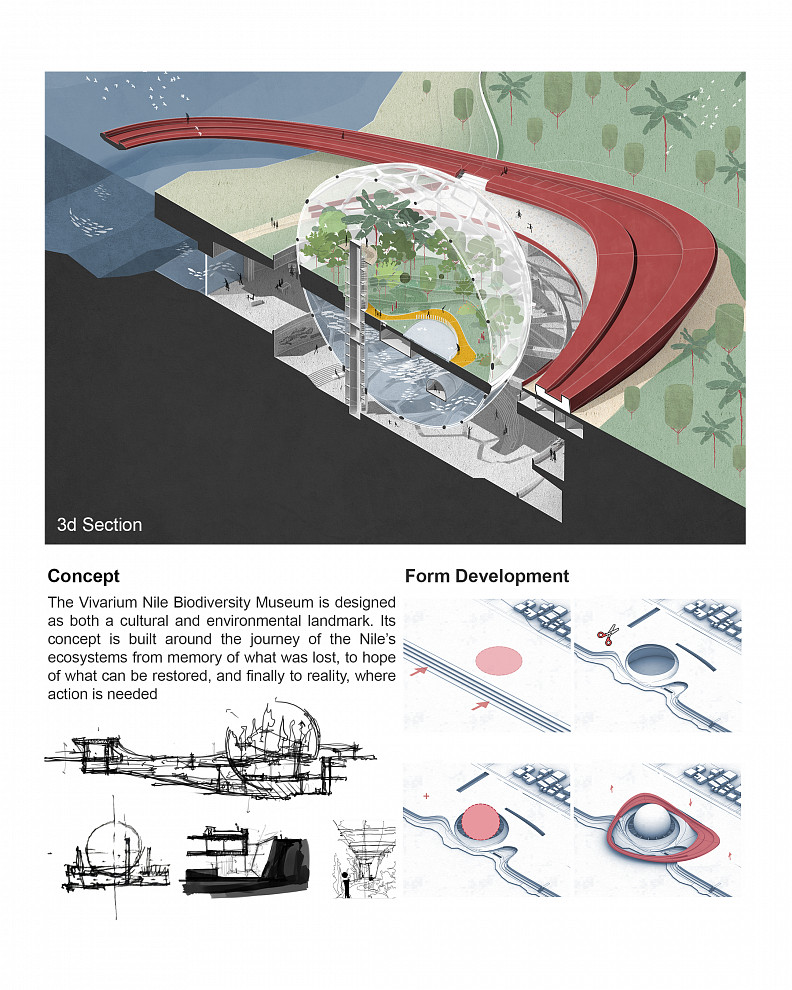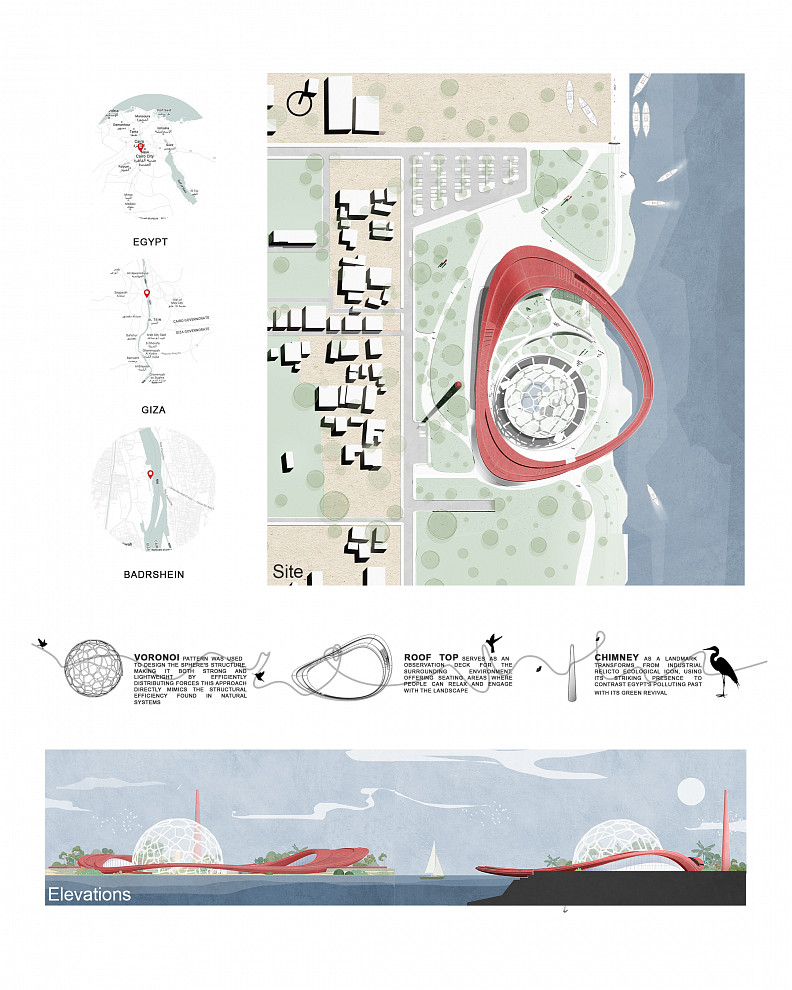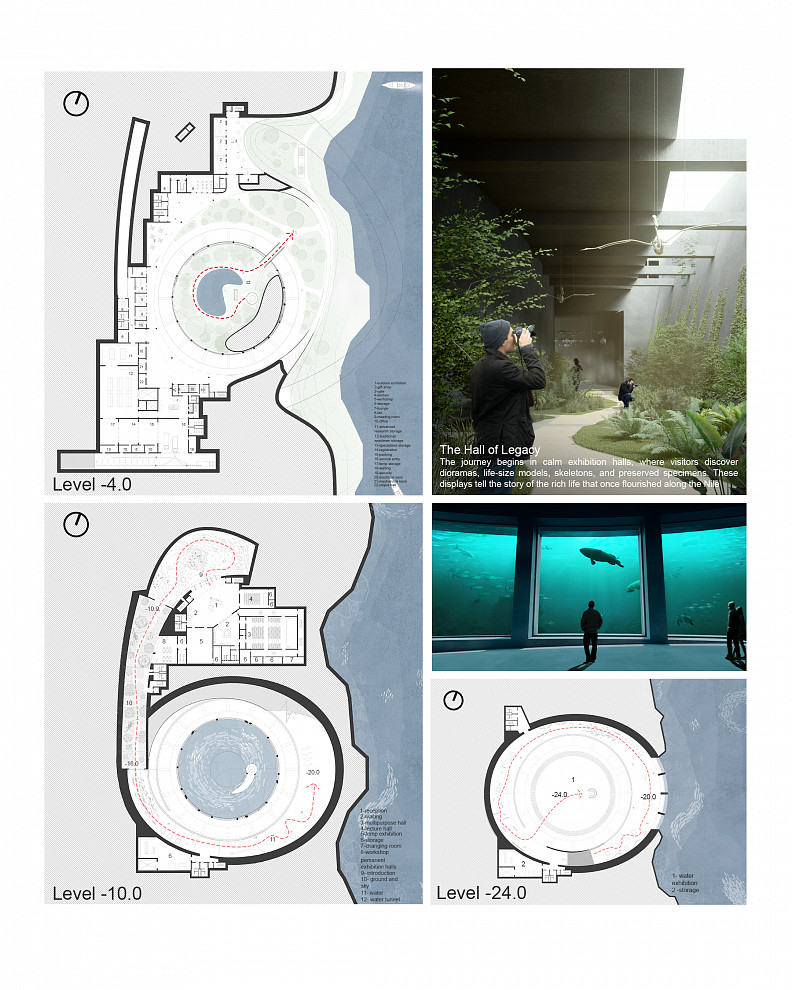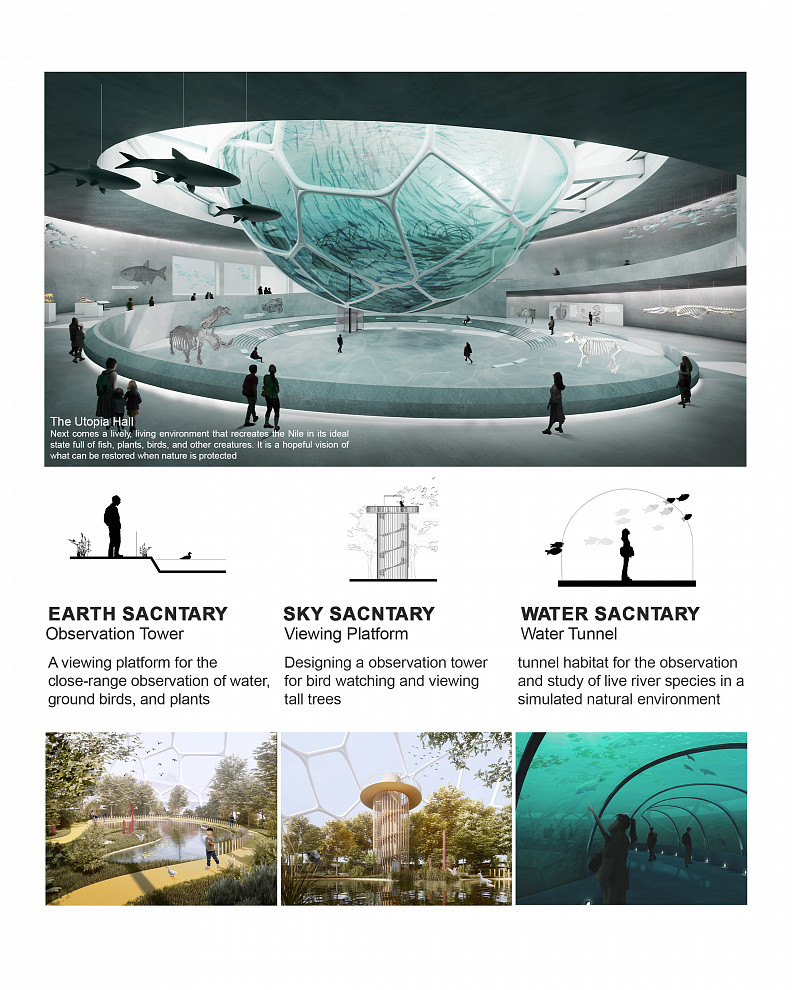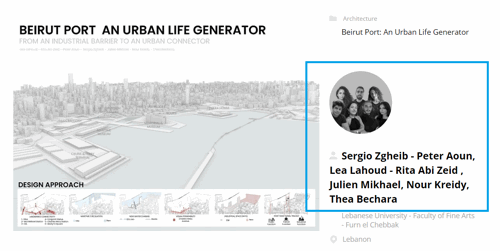The Vivarium

Project idea
The Vivarium Nile Biodiversity Museum in Badrashin, Egypt, is a crucial cultural and environmental landmark addressing the severe degradation of the Nile River ecosystem. It aims to transcend the traditional museum concept by serving as a proactive call to action. The project will guide visitors on a journey from remembering the Nile's past richness to envisioning its restoration and confronting current challenges, thereby inspiring active engagement. Key goals include educating, inspiring, and fostering empathy for Nile biodiversity, promoting sustainable practices, supporting conservation research, and creating an iconic, sustainably designed landmark (largely underground for minimal environmental impact and natural cooling).
Project description
The Vivarium offers a comprehensive solution for the Nile's ecological degradation, covering architectural design, visitor experience, education, and research. Its unique architectural features include a largely underground design, a spherical Utopia Hall, a flowing red structure, a rooftop observation deck, and a repurposed "Chimney" symbolizing environmental revival. The visitor journey encompasses "The Hall of Legacy" for historical exhibits, "The Utopia Hall" for a live, simulated pristine Nile ecosystem (including a water tunnel), and an "Observation Bridge" on the rooftop to highlight present challenges. The project also integrates Earth, Sky, and Water Sanctuary zones for observation, along with essential facilities like research labs, offices, and visitor amenities. It specifically targets the protection of endangered Nile flora and fauna.
Technical information
The project employs advanced architectural and environmental engineering for a sustainable and immersive facility. Structurally, it features robust subterranean construction (down to -24.0m) with an all-steel primary framework. The Utopia Hall's sphere utilizes a Voronoi pattern steel structure, reinforced by 16 horizontal steel beams for optimal load distribution. The lower half of the sphere is made of very strong acrylic glass to withstand water pressure, while the upper half is covered with ETFE material.
